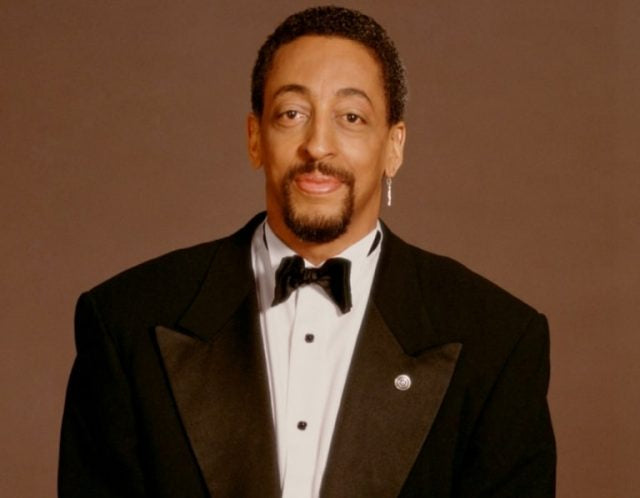He would’ve been 77 years old today!
Gregory Hines was born on February 14, 1946 in New York City to parents Maurice Hines Sr. and Alma Hines. A child prodigy, Hines built a successful career as a tap dancer, and his extensive resume is the stuff icons are made of. Internationally known, Hines took his talents across the globe, from Broadway to television to film and even The White House, solidifying the genre of dance as a respected and beautiful art form. He pushed boundaries, blazed a trail, and curated a legacy that far outlasts his short 57 years on earth. In honor of what would have been the legendary dancer’s 77th birthday, here are 4 inspiring things you should know about entertainer Gregory Hines, courtesy of the New York Public Library:
Hines became a professional dancer at the age of five.
Before he turned three years old, Hines was already dancing, becoming a professional dancer at the age of 5. He and his older brother, Maurice, performed as The Hines Kids, taking their show on the road for 15 years. Broadway choreographer Henry LeTang helped create the duo’s first tap dance routines, but the brothers perfected their technique working with other Black tap dancers. They would basically live at the Apollo Theatre and any time tap legends like Charles “Honi” Coles, Howard “Sandman” Sims, the Nicholas Brothers, and Teddy Hale performed, Hines and his brother saw it as a personal opportunity to learn new skills.
He was known for creating improvisation in tap dancing.
When Hines was 18, his father joined him and Maurice on the road, becoming a trio. The brothers danced and their father, Maurice Sr. accompanied them on drums, the group touring internationally. That early work would follow Hines through the rest of his career, and he became revered for his ability to improvise within his tap dancing. Hines would use the rhythms of the music to create new worlds in his dance, becoming an early pioneer of what has been dubbed “improvography.”
“He purposely obliterated the tempos…throwing down a cascade of taps like pebbles tossed across the floor. In that moment, he aligned tap with the latest free-form experiments in jazz and new music and postmodern dance,” Sally Sommer, a tap historian, once wrote of Hines.
In 1995, NY Times dance critic Anna Kisselgood described Hines’ performance; “Visual elegance, as always, yields to aural power. The complexity of sound grows in intensity and range.”
Hines was a Tony and Emmy award-winning actor.
For a moment in his career, Hines took a break from dancing, moving to California and exploring other art forms through the creation of a jazz-rock band and his release of original music. He returned to New York during the late 1970s, immediately landing roles on Broadway that propelled him back into the spotlight. Hines’ portrayal in the 1978 play Eubie earned him the first of four Tony nominations. In 1992, he finally won his first Tony for Best Actor in a Musical for his portrayal of jazz legend Jelly Roll Morton in George C. Wolfe’s production of Jelly’s Last Jam. The show also earned him another Tony award nomination for choreography.
By the ‘80s, Hines had also made his ascent into television and film, creating and hosting specials around the history of tap dancing, even landing his own show on CBS entitled, The Gregory Hines Show. He also starred in a number of cultural classics like comedy western The Cherokee Kid, The Preacher’s Wife alongside Denzel Washington and Whitney Houston, and Waiting to Exhale with Angela Bassett. However, it was his voiceover work in Bill Cosby’s animated series Little Bill on Nickelodeon that earned him an Emmy award.
He was an advocate for the genre of tap and an inspiration for other dancers to follow.
Hines stretched himself throughout his career, dabbling in various art mediums and doing all things with intention and purpose. However, he never lost sight of his first love and remained an outspoken advocate for the genre of tap. In 1988, he was instrumental in lobbying for the creation of National Tap Dance Day, which is currently celebrated in 8 nations and 40 cities across the United States. He also served on several boards, including the Board of Directors of Manhattan Tap, the Jazz Tap Ensemble, and the American Tap Foundation.
It was Hines’ work that paved the way for other legendary tap dancers like Savion Glover, Dianne Walker, Ted Levy, and Jane Goldberg. Without Hines’ efforts, the art form may not carry the respect and value it has today.
Happy Heavenly Birthday Mr. Hines! Because of you, we can!
4 inspiring things you should know about entertainer Gregory Hines/ Photo Courtesy of Harry Langdon/Getty Images

